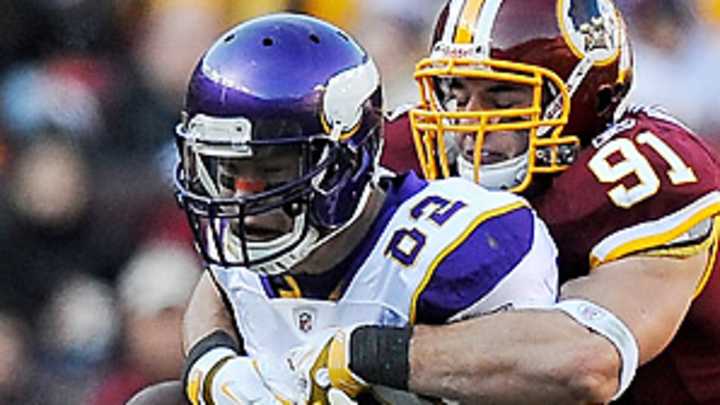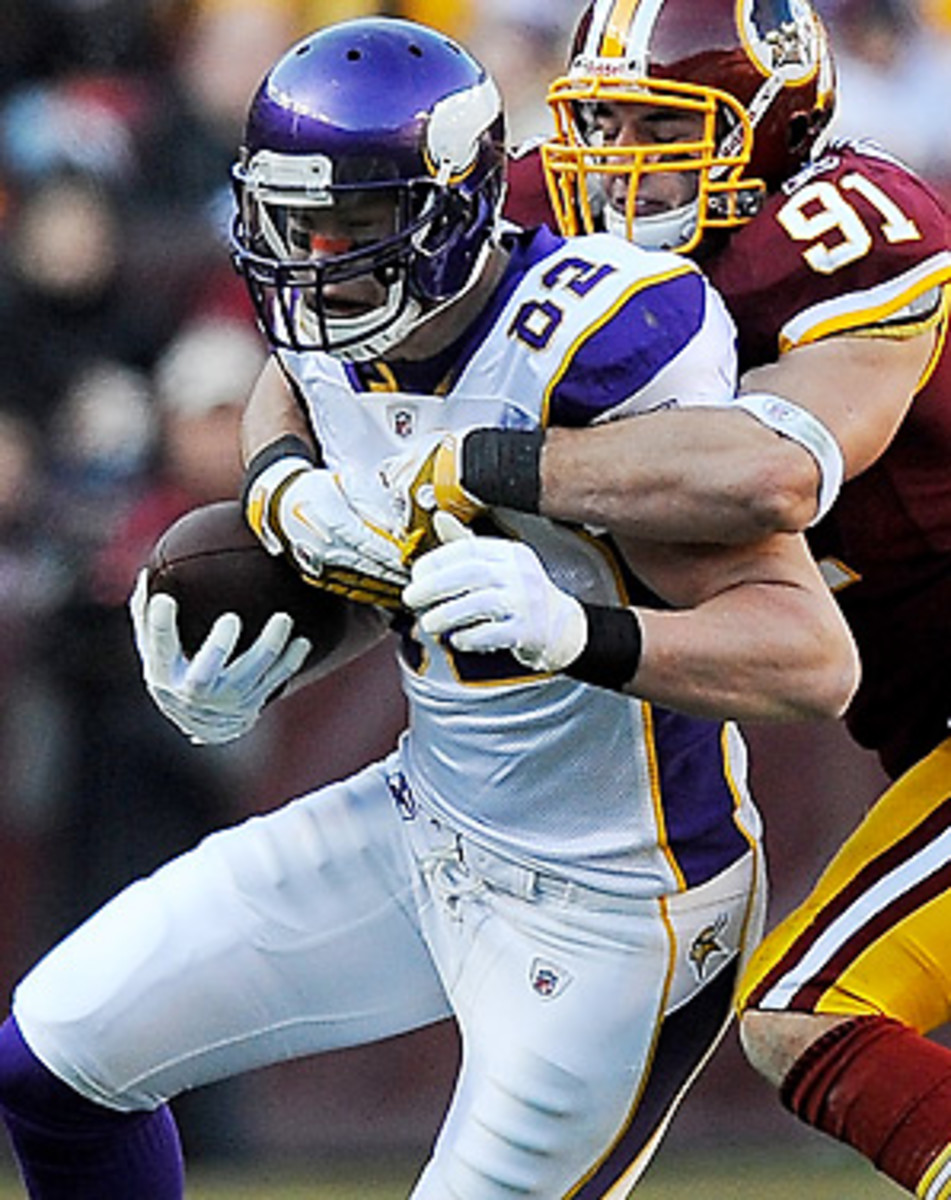John Carlson, Kyle Rudolph hoping to replicate Patriots TEs' success

Kyle Rudolph caught 26 balls for 249 yards and three touchdowns as a rookie in 2011. (Getty Images)

The NFL has long been a copycat type of league, so it's no surprise in light of the Rob Gronkowski-Aaron Hernandez experience in New England last season that more teams are trending back toward multi-tight end sets this summer. The big obstacle to those plans is that there are not a lot of Gronkowski-Hernandez duos walking around the league.
The Vikings believe they might have one in second-year big body Kyle Rudolph and athletic free-agent acquisition John Carlson. Or, at least, that's what they're hoping.
"If we can take both of those aspects of their game and implement it to what we're doing here, we have a chance to be successful," said Rudolph, the Vikings' second-round draft pick a year ago who has a similar build to Gronkowski at 6 feet 6 inches and 258 pounds.
Carlson runs 6-6 and 251, and in theory would play the Hernandez role in this setup. Of course, comparing the Vikings and Patriots piece by piece is a fruitless endeavor -- the overall offensive schemes are entirely different; Minnesota doesn't have Tom Brady calling the shots, and New England doesn't have Adrian Peterson (when he's healthy) getting 20-plus carries a game.
But if the Vikings could incorporate some of the principles of the Patriots' 2011 passing attack, it might do wonders for Peterson, Toby Gerhart and especially Christian Ponder.
The very, very early returns on Ponder out of Vikings camp have been muddled at best. Despite Ponder's 10 starts in 2011, Minnesota is trying to ease its second-year QB into things with a "somewhat vanilla" approach, according to the Star Tribune's Dan Wiederer.
"Our mindset," Ponder told Wiederer, "is to do the ordinary things better than everyone else."
There may not be a more "ordinary" way to go about things in August and September than to implement an Ace formation (single back) with two tight ends and two running backs. Given the personnel that Minnesota currently employs, it would maximize the on-field talent. In that setup, Carlson and Rudolph would both be on the field, with Gerhart or Peterson in the backfield, and Percy Harvin and another receiver (Jerome Simpson, post-suspension; Devin Aromashodu, Greg Childs, etc., in the meantime).
When Minnesota is at full strength, opposing defenses have to pay extra attention to Harvin and Peterson, which should in theory open those spots up the middle for the tight ends.
That's what Ponder needs to be successful at this point: Targets that he knows are going to have space on each passing down. We saw throughout Ponder's 13-TD, 13-INT rookie season that he doesn't yet have the confidence or ability to pick apart NFL defenses on his own.
The beauty of the Gronkowski-Hernandez combo is that it created huge mismatches because of how New England shifted those two players around. In the passing game, Gronkowski and Hernandez were able to isolate on linebackers and safeties; in the run game, they added two more capable blockers -- New England rushed for nearly 1,800 yards and finished third in the league with 18 touchdowns on the ground, despite not having a legit No. 1 back.
Consider those benefits translating to Gerhart and Peterson -- few eight-man boxes, defenders spread wide to cover motioning tight ends, more deception in the game plan. The potential for improvement on offense is tangible.
This is all easier said than done, however. The Vikings had two viable tight ends last season, too, in Rudolph and Visanthe Shiancoe. They mustered less than 700 yards receiving, and Ponder never found a comfort zone. And any progress Minnesota makes in 2012 offensively hinges on its quarterback play. Rudolph and Carlson could run free all day, but if Ponder can't hang in the pocket and deliver passes to them, it's moot.
It also remains to be seen if Rudolph can handle increased responsibility in Year 2 or how much Carlson can contribute after missing all of 2011 with a shoulder injury.
